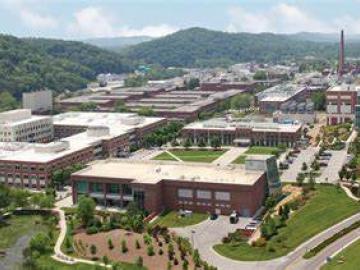Filter News
Area of Research
News Type
News Topics
- (-) 3-D Printing/Advanced Manufacturing (33)
- (-) Advanced Reactors (6)
- (-) Big Data (21)
- (-) Clean Water (14)
- (-) Composites (5)
- (-) Cybersecurity (14)
- (-) Space Exploration (11)
- (-) Transportation (24)
- Artificial Intelligence (38)
- Bioenergy (46)
- Biology (53)
- Biomedical (26)
- Biotechnology (9)
- Buildings (16)
- Chemical Sciences (19)
- Climate Change (44)
- Computer Science (76)
- Coronavirus (17)
- Critical Materials (1)
- Decarbonization (38)
- Emergency (1)
- Energy Storage (28)
- Environment (98)
- Exascale Computing (21)
- Fossil Energy (3)
- Frontier (19)
- Fusion (27)
- Grid (20)
- High-Performance Computing (38)
- Hydropower (5)
- Isotopes (23)
- ITER (2)
- Machine Learning (19)
- Materials (37)
- Materials Science (36)
- Mathematics (5)
- Mercury (7)
- Microelectronics (2)
- Microscopy (19)
- Molten Salt (1)
- Nanotechnology (16)
- National Security (30)
- Net Zero (6)
- Neutron Science (43)
- Nuclear Energy (49)
- Partnerships (10)
- Physics (25)
- Polymers (7)
- Quantum Computing (14)
- Quantum Science (23)
- Renewable Energy (1)
- Security (10)
- Simulation (23)
- Software (1)
- Summit (29)
- Sustainable Energy (36)
- Transformational Challenge Reactor (3)
Media Contacts

Rishi Pillai and his research team from ORNL will receive a Best Paper award from the American Society of Mechanical Engineers International Gas Turbine Institute in June at the Turbo Expo 2024 in London.

ORNL’s Erin Webb is co-leading a new Circular Bioeconomy Systems Convergent Research Initiative focused on advancing production and use of renewable carbon from Tennessee to meet societal needs.

Scientists at ORNL have developed 3D-printed collimator techniques that can be used to custom design collimators that better filter out noise during different types of neutron scattering experiments
ORNL scientists have determined how to avoid costly and potentially irreparable damage to large metallic parts fabricated through additive manufacturing, also known as 3D printing, that is caused by residual stress in the material.

College intern Noah Miller is on his 3rd consecutive internship at ORNL, currently working on developing an automated pellet inspection system for Oak Ridge National Laboratory’s Plutonium-238 Supply Program. Along with his success at ORNL, Miller is also focusing on becoming a mentor for kids, giving back to the place where he discovered his passion and developed his skills.

Since 2019, a team of NASA scientists and their partners have been using NASA’s FUN3D software on supercomputers located at the Department of Energy’s Oak Ridge Leadership Computing Facility to conduct computational fluid dynamics simulations of a human-scale Mars lander. The team’s ongoing research project is a first step in determining how to safely land a vehicle with humans onboard onto the surface of Mars.

Researchers at ORNL became the first to 3D-print large rotating steam turbine blades for generating energy in power plants.

A team of computational scientists at ORNL has generated and released datasets of unprecedented scale that provide the ultraviolet visible spectral properties of over 10 million organic molecules.

Nuclear engineering students from the United States Military Academy and United States Naval Academy are working with researchers at ORNL to complete design concepts for a nuclear propulsion rocket to go to space in 2027 as part of the Defense Advanced Research Projects Agency DRACO program.

Digital twins are exactly what they sound like: virtual models of physical reality that continuously update to reflect changes in the real world.




